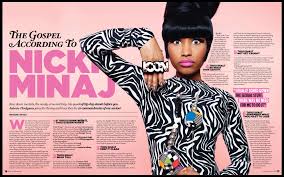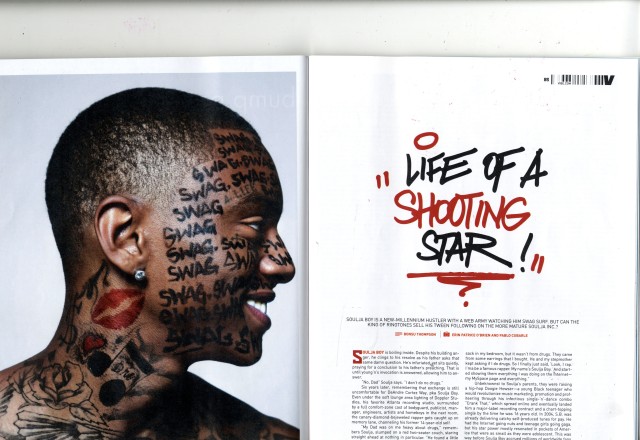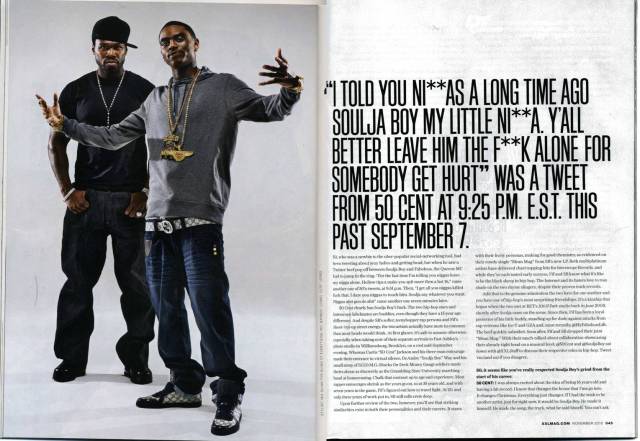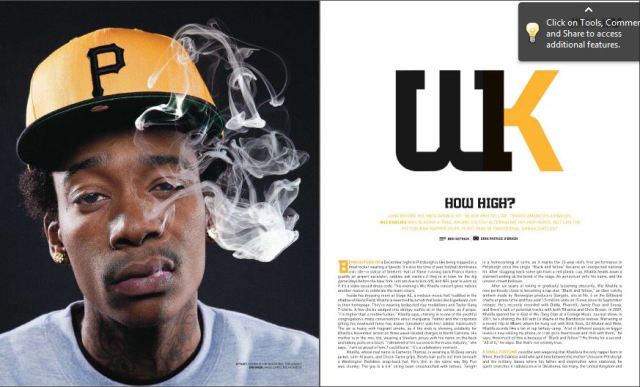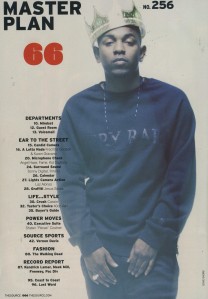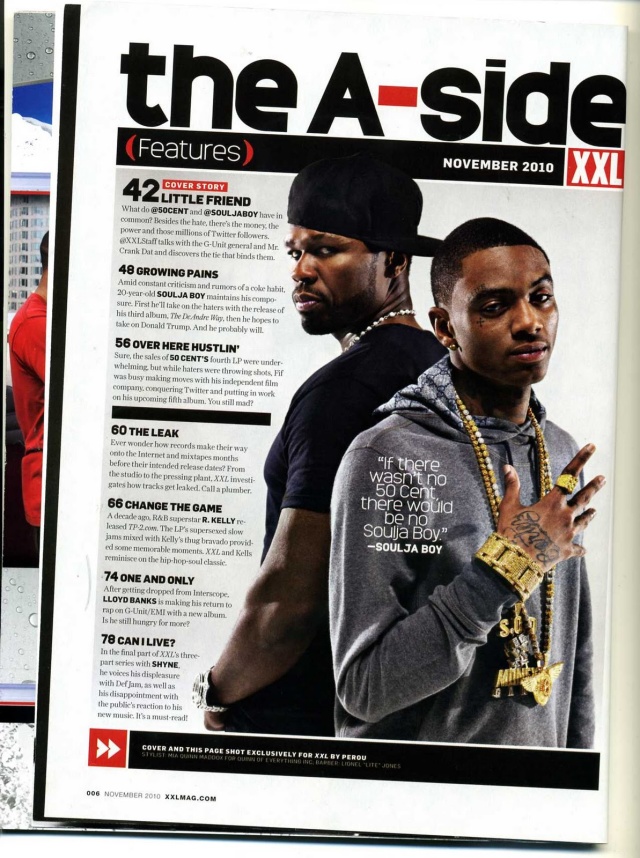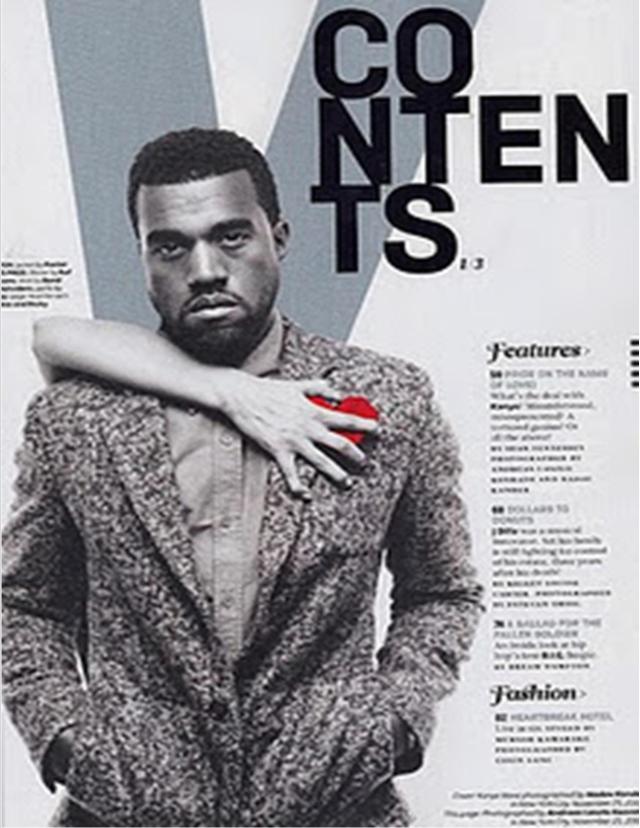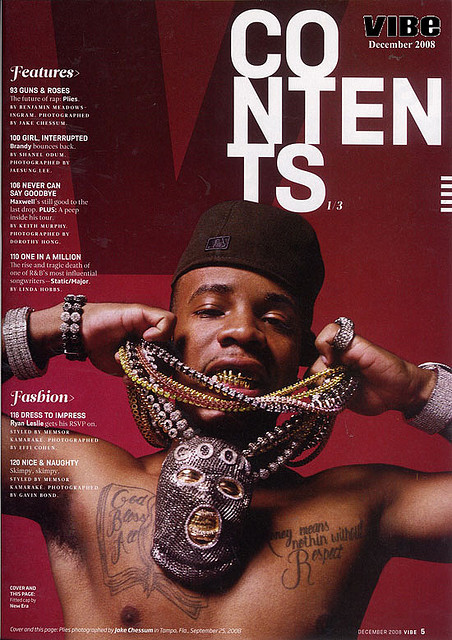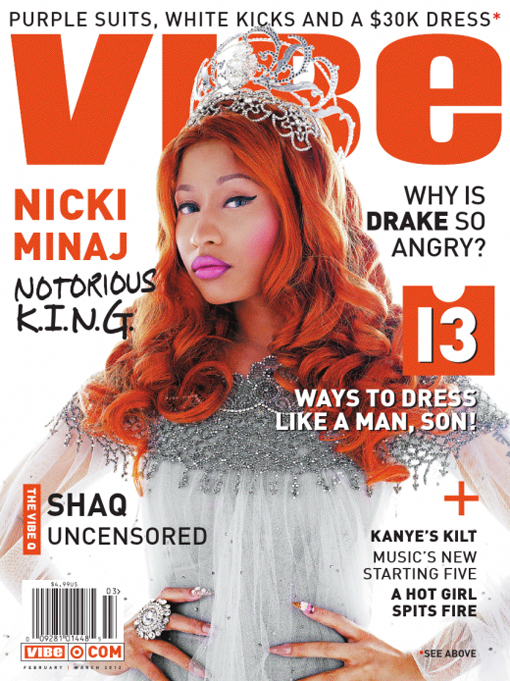Through close analysis of Hip-Hop & RnB magazines, I have received a good assumption of what the typical Hip-Hop magazine introduces within it. I have come to a conclusion of how this genre magazine portrays certain genders and classes and how they portray them in the sense of stereotypes, ideologies and how they appeal to the audience through the use of conventions and layout choices.
For starters within the front cover of the genres magazine, they mostly use male artists to be the cover model showing the genre of music is quite masculine. When having male artists on the front cover of a Hip Hop magazine they portray them in the stereotypical rappers way, having them look hostile whilst covered in jewellery, they reinforce the lifestyle that these artists have and one that everyone should possibly have or want, one of being rich and flash. They reinforce the dominant ideology that rappers have tattoos by doing this the artist is usually topless. The rappers are usually portrayed in a thug way almost as if they are a threat to someone; however when the artist is then portrayed on a different genre of music magazine- i.e. Rolling Stones a rock magazine – the artist is then portrayed in a way that fits the new genre. For example when artist Lil Wayne is on a Hip Hop magazine he is portrayed in the stereotypical rapper way, looking like a thug, however when on the front cover of Rolling Stones magazine he is portrayed in a more thoughtful rocker way, wearing similar hats and not as much jewellery. Therefore this shows that the artists are portrayed in a way that will appeal to the audience of the certain genre magazine. Juxtaposed to this, depending on the message they are trying to send to the audience, they may change some of the stereotypes that they portray on their average front cover. For instance on an issue of The Source magazine the cover line being ‘New Coming Of Age’ they then adjusted the cover models to fit the cover line presenting them in a way that isn’t all of the usual stereotypes that we assume of the genre.
Furthermore, when deciding to have a woman artist –usually of the RnB genre- on the front cover, they use the male gaze theory and sexualize them, they do this to keep the magazine masculine in some ways as it will still bring in the male audience however it brings in a woman audience appealing to them as they may idolize the artist. However when choosing to have a woman of a Hip Hop genre as the cover model, they create a vibe to the audience making the female artist quite masculine, having a strong pose that shows they are a part of the masculine genre therefore they will abide by the stereotypes.
Henceforward, with the use of cover lines the magazine reinforces and hostile vibe and powerful and rich lifestyle. The magazine does not use many conventions like push buttons, footers interrogatives as they keep their front cover simple in the sense of conventions making sure the front cover is not too busy, they simply give the audience awareness of all the articles that will be introduced in the magazine. More so, the magazine front cover always uses anchorage to link the top article with the image they do this to interest the reader. However whilst keeping the front covers simple, they use the space wisely making the page still look filled, without making the front cover too busy.
Meanwhile, my genres magazine keeps their contents pages conventions and layout choices very similar. I have grasped that the magazines main focus for their contents page is not the writing telling the audience what page is where but the lead image is. On all contents pages I had analysed the lead image in the focus of the magazine, the lead image is usually of artists who have a top story in the issue and in some cases they will use a pull quote from the artists’ article. The writing is usually located close to the lead image however it is usually in quite a small font, some may suggest they do this to emphasise on the lead image however, the writing is easy to locate and in an easy enough font to read. All magazines contents pages that I had analysed all used a heading which the magazine consistently used in all of their issues. This would give their content pages and magazine a brand identity as the audience would recognize these traits as being apart of a certain magazine. This genre keeps their contents pages very simple, they use conventions like footers to give credit to the photographer of the lead image. They also tell the reader the date of issue and in some cases what issue it is.
Henceforward, after analysing multiple double page spreads, I have realised that they all use certain conventions and layout devices in similar ways. For starters, with the article being surrounded on a certain artist the first page of the spread is usually a picture of the artist, the photo either supports the title of the double page spread or simply supports the way the artist is usually portrayed using devices like anchorage or intertextuality, for example on a Wiz Khalifa article they dressed the artist in black and yellow as he has a #1 song named Black & Yellow. Furthermore, in some cases they create a colour code that also fits with the artist as this will appeal to the audience as it creates realism to the article as this is what they would expect the article to be like. I have grasped that when creating a double page spread they create all the conventions and layout choices of the magazine to be about and to relate to the chosen artists therefore the headings a subtitles will be written in the style of the artists and even worded in a way that would relate to the artist. The magazine makes sure that the double page spreads all fit in well with the colour code the writing and to create a really good vibe to the magazine, this appeals to the audience as if they are a fan of the artist the double page spread is basically a little profile of the artist to them. More so, the magazine uses only a few other conventions like the use of a drop cap and columns, these are simple conventions that are portrayed in very many different types of magazines. Therefore, when creating double page spreads they create a page that fits in with the artist making it appeal to the audience.
Consequently, from analysing different Hip-Hop magazine and learning how they portray certain stereotypes through conventions and layouts I now have inspiration and the knowledge to be able to create my own magazine in this genre.
